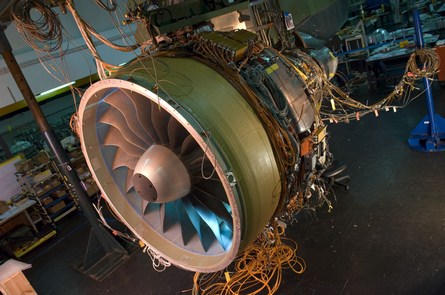Growing interest from airlines in the development of a new lightweight, twin-aisle narrowbody is among the factors driving Pratt & Whitney to ensure its PurePower geared turbofan (GTF) engine can provide as much as 40,000lb of thrust, a top executive at the engine maker says.
The GTF has already been selected by Bombardier to power the 110/130-seat CSeries and by Mitsubishi to power the Mitsubishi Regional Jet (MRJ). The CSeries will be powered with the 20,000lb-24,000lb thrust class PurePower PW1000G.
| |
|---|---|
Yet, one of the reasons why Pratt & Whitney has "gone as high as 40,000lb of thrust is" that there are "airlines out there looking for a light twin", P&W vice-president next generation product family Bob Saia told ATI and Flightglobal last week during an exclusive interview in Dallas, where the engine manufacturer held a customer forum to exhibit some of its GTF hardware.
These airlines are interested in an aircraft with an "[Airbus] A320, A321 seating capacity, so 170 to 220 seating capacity" that offers a twin-aisle configuration, says Saia adding: "The reason for the twin aisle was two-fold - cabin comfort, but another is can you turn the aircraft around faster in terms of boarding and de-boarding."
It remains to be seen if airframers will pursue development of a twin-aisle narrowbody. Despite pressure from airlines to define their narrowbody replacement plans, Airbus and Boeing have instead been developing their current programmes to improve efficiency. Both airframers are looking at the possibility of re-engining their highly-successful narrowbodies, with decisions expected this year.
Some analysts believe Airbus and Boeing have stepped up their re-engining studies because a 150-seat variant of Bombardier's CSeries is in the works, but Bombardier has referred to such reports as "speculative".
Nonetheless, Pratt & Whitney believes its GTF is well-positioned to play a role in any of these scenarios.
"No matter what the application is, even if it were a lightweight twin-aisle, we believe the 40,000lb thrust regime would really cover that," says Saia. "So if someone like Bombardier decides to go larger, or if a re-engining happens, or if Boeing and Airbus really decide 'we're not going to re-engine, we're going to do a new centreline aircraft and here's a new airplane' we can take all these requirements, and make sure we are ready to leverage the value of the gear, and have the demonstration to say, 'we know we're ready for this thrust regime'."
With a fuel burn improvement of 15%, the GTF offers "significant" fuel cost benefits relative to a two shaft direct drive engine such as a conventional turbofan like the CFM International CFM56, says Saia.
"In the case of an airplane like an A320 or 737-800, you're saving about $750,000 per aircraft per year if you look at a CFM56 relative to our geared engine. So if you have a fleet like Southwest of [nearly] 600 aircraft, that's a significant amount of money," he claims.
Saia further alleges that the maintenance benefit could represent hundreds of thousands of dollars worth of additional savings per aircraft per year. "Relative to the CFM56-5B, the GTF has four less life-limited disks and 1,500 less airfoils. The cost of these disks are approximately $100,000," he says.
"Relative to the CFM International Leap X, the GTF advantage grows. The GTF has seven less life-limited disks and a minimum of 1,500 less airfoils. The cost of these disks represent a savings of $20 or more per engine flight hour. These life-limited parts plus lower airfoils will enable the PW1000G to have a greater than 20% engine maintenance cost advantage over the CFMI offering."
A further 2% to 3% reduction in airline operating costs can be realised by European airlines that face airport noise fees. And additional savings from the GTF will be realised when airlines in Europe are forced to pay penalties for CO2 emissions, says the Pratt & Whitney executive.
CFM International explains its decade-long development of LEAP technology has entailed extensive architecture studies focused on bringing the most advanced technology to every engine component, front to back: 3-D woven resin transfer molding, composite fan blades, a lean burn, ultra-low emissions combustor, next generation high-pressure turbine blades and third generation 3-D aerodynamics.
"Each of these technologies is constantly evaluated through a filter of their potential impact on reliability, which is something on which our customers simply cannot compromise," says CFM. "LEAP is a more than worthy successor to the CFM56 product line and, we believe, the right choice for new or re-engined single-aisle aircraft applications in the future."
Bombardier, meanwhile, is stressing to potential CSeries customers that a re-engined Airbus or Boeing narrowbody is not a new product. "It's a refresh," says Bombardier vice-president commercial aircraft programmes Ben Boehm.
The only platform optimised "nose-to-tail" for the 100-149 seat market remains the CSeries family, he says. "Engines are only one part of the efficiency equation."
Bombardier on 25 February announced Republic Airways as its third CSeries customer. The US operator has agreed to take 40 CS300s plus 40 options.
Source: Air Transport Intelligence news

















